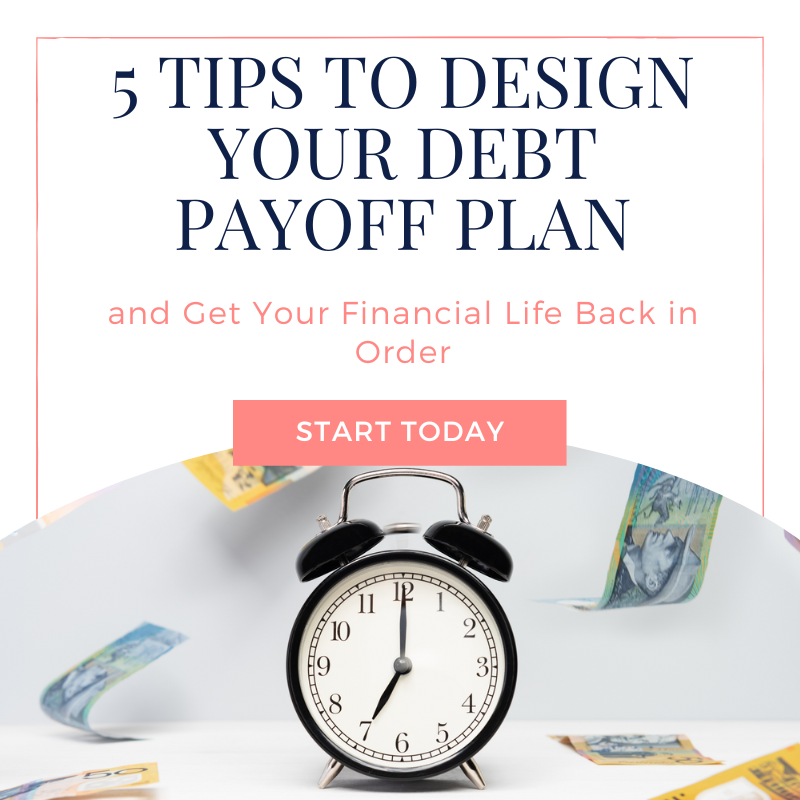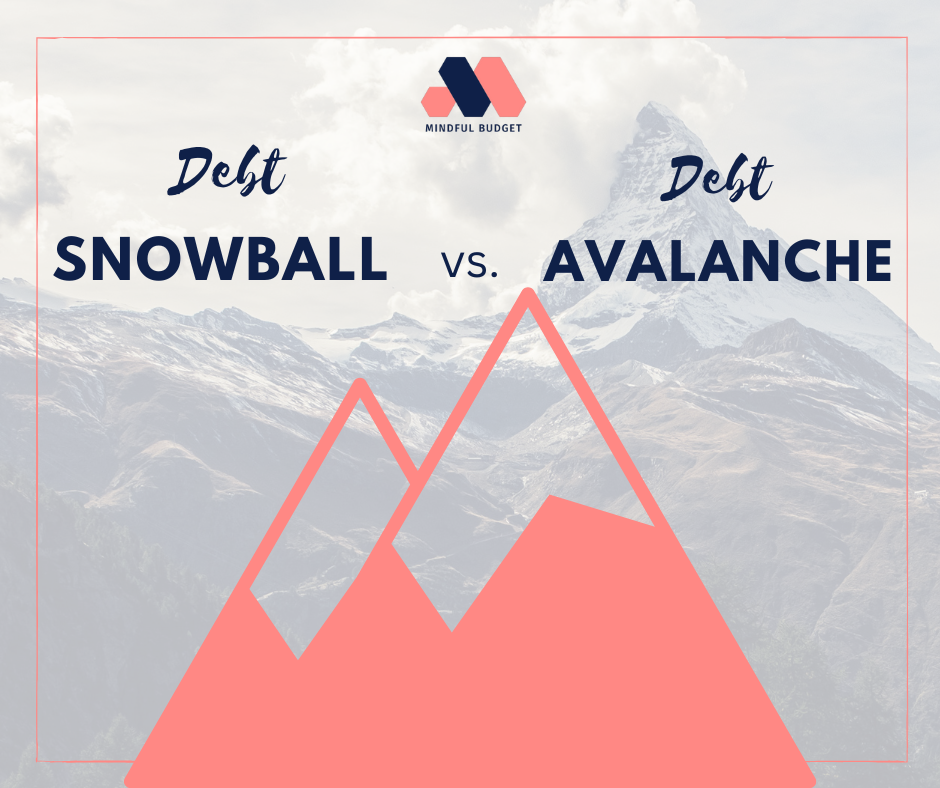
5 Tips to Design Your Debt Payoff Plan and Get Your Financial Life Back on Track
Debt is a huge burden for most people. If you have debts, you’re not alone - the average Aussie Millennial is sitting on about $32K worth of non-property debt! It can be a source of constant worry and stress.
When you are in debt, it can be hard to make headway. You may have a lot of debt and not know where to start. But it doesn't have to be that way. If you're willing to make some changes in your spending habits, you can get your financial life back on track. It is important that you take the time to create a plan for paying off your debt.

Here are 5 tips to design your debt payoff plan and get your financial life back in order:
1) List all of your debts, including interest rates and minimum repayment amounts
2) Create a realistic budget
3) Create an emergency fund - Read 4 Stages of Emergency Savings Planning that Everyone Should go Through
4) Decide on a debt payoff method such as a debt snowball or debt avalanche to prioritise and plan to get ahead.
5) See where you can find extra bonus repayments
Why You Need a Debt Payoff Plan
Let’s face it, debt sucks, even a mortgage where you know you’ll have an asset at the end of it can still feel like a ball and chain while trying to make ends meet. Debt can build up a lot of stress and often with clever marketing and a very lenient banking system, it’s a revolving door for many of us. With a debt payoff plan, you can finally start to enjoy life. You will have more time to spend with your loved ones and less time stressing about your debt.
Paying interest on debt means less for other nice pleasures in life. A debt payoff plan is a tool that helps you get out of debt quickly by paying off the debts in an organised manner. It also helps you budget for other things so that you can start saving money for the future.
Debt payoffs are not just about getting rid of your debts but also about changing your mindset. You will be able to be confident and happy when it comes to managing finances instead of feeling burdened and stressed all the time.
- Achieve financial freedom
- Financial peace of mind
- Reduce stress
A debt payoff plan is a systematic approach to paying down debts. It involves calculating the amount of each payment, how much you need to save each month, and how long it will take you to pay off your debts.
What are debts?
Debt is a loan or unpaid amount that you owe. The amount of money that you have to repay is called the principal. The interest rate on the loan determines the monthly payments.

When it comes to debt, there are two types: secured and unsecured. Secured debts are those where your property is used as collateral for a loan, such as a mortgage or a car loan. Often these are on the lower end of the scale for lower interest rates. Whereas unsecured debts, such as those where there is no collateral, include credit cards, personal loans, utility bills, and medical bills. These usually have a much higher interest rate.
These debts also fall into either revolving or instalment types. Revolving debt is a line of credit, such as a credit card where you are approved for a set amount that you can keep utilising ongoing - pay some off, redraw again later. This can be very tricky for some to get out of, and banks will love you! An instalment debt differs as it will be closed-ended. That means it’s repaid over a fixed period of time, often with fortnightly or monthly instalments- such as a car loan, student loan or buy now pay later loans!
How to Create a Clear & Effective Debt Payoff Plan
Step 1: List all Sources of Income
There are many sources of income that one can have. Some of the most common sources of income are:
-
Salary
-
Commissions
-
Bonuses
-
Dividends
-
Income from a business you own or operate
-
Rental Income from properties you own or rent out to others
Step 2: List Debts and Monthly Amounts Owed
It’s important to always keep track of your debts and pay them off as soon as possible. Start by creating a list of all the debts you owe, this may include:
-
Credit Card
-
Personal Loan
-
Car Loan
-
Mortgage
-
Buy Now Pay Later - Afterpay, Zip Pay, Open Pay, HUMM etc
-
Student Loan
-
Medical/Vet Bill Loans
-
Committed membership subscriptions (gym membership, online streaming etc)
For each debt list the minimum repayment and interest rate. Also take note of any hidden monthly fees, account fees and early repayment fees (or break fees).
Download my FREE Debt Repayment Tracker HERE to make your life easy.
Step 3 - Break it Down into Monthly Payments and Prioritise
To keep things simple and organised for the budget, break down the amounts owed into a monthly payment. You will still need to adhere to your contract terms for actual payment but stick with me here so we get a clear picture of the ins and outs. You’ll want to know the total repayment and how to prioritise each debt.
Add the total minimum monthly repayment amount to your budget then see how much surplus is left over after paying all bills and any emergency savings. If you need help budgeting, feel free to download the Best Budget Methods Guide HERE to help get you started. You can also use a finance tracker - I highly recommend Pocketsmith and use it with all my coaching clients, there is a free version and I'm happy to share a link to a 30-day free trial of their premium plan - simply click here.
***** Optional but very helpful: To get a really clear overview of your debts, and you love a good spreadsheet, you can also create an amortisation schedule.
An amortization schedule is a table that lists the fixed-rate payments (amortization) and the interest paid over a given period of time. It shows how much of the principal balance of a loan is paid off over time and is used to calculate the total interest paid, total payments made and the balance remaining on an account.
A simple amortization schedule is created by dividing the total amount of money needed to pay off the loan by the number of payments made. The result will be the payment amount, which can then be divided by 12 to find out how much will be paid each month. The table would then show these amounts and when they are due. *****

Once you have your table of debts listed, there are two main debt payoff methods that can really help accelerate your way to financial freedom - Debt Snowball and Debt Avalanche payoff methods. Both require you to pay the minimum amount on all debts, then with any surplus from your budget we focus all of this onto just one of the debts to be aggressive and knock this one off first.
Debt Snowball
This is a strategy that involves paying off the debts with the lowest balances first. It is often used when people are just starting to pay down their debts, and it can be a good way to build momentum. If you are able to quickly pay off debt and cancel the account for good - you feel good and are likely to keep going. Plus one less line of credit over your head is very good for your credit rating!
To use debt snowball, pay the monthly minimums on all debts then use surplus (or any bonus payments) from the budget to make extra repayments onto the debt with the smaller balance first. After the first debt is paid off, take the full amount from that debt (minimum repayment and the surplus) and put it towards the next one until that one is cleared, and so on and so on.
Debt Avalanche
This method is exactly the same as above, but it focuses on paying off the highest interest-rate debts first. This method can be helpful for those who want to get rid of their high-interest debt as quickly as possible. On paper, typically this strategy will save you more in interest overall and put more in your back pocket. However, note that it may take a while before you pay off that first debt so can be a struggle for motivation - but trust the process!
As with all debt plans - check any early termination/break fees and calculate these into the equation. Depending on the penalties, you may still be better off paying it out ASAP.
To make life easy I found this Debt Reduction Xcell Calculator online (by vertex42.com) which lets you list your debts, minimum amounts and interest rates - then toggle between the different payoff methods to see what effect it has. It also includes a payment schedule where you can add bonus extra repayments too!
Click here to download the FREE Debt Reduction Calculator

Debt Consolidation
If you are struggling and have a number of different debts, then you may also want to consider looking at debt consolidation. This can make life super simple by combining all debts into one big one and spacing them out over 3-7 years. You will have just one monthly repayment and interest rate to add to your budget. However, this isn't to be taken lightly as in effect, it’s another personal loan. To apply for a debt consolidation loan, the bank will take a look at credit your current credit file and depending on your personal circumstance, you may not get the full amount needed (or a loan approved at all). It’s best to talk with a finance professional first, such as a finance broker or budget coach to provide more information on this before making any applications. I’m happy to discuss this further and connect you with a team of professionals who can assist, finance brokers usually don’t charge a fee (they get paid by the bank) - email me [email protected]
Step 4 - Prepare for the Future
Since the future is unpredictable, it is important to prepare for it. Depending on your age, lifestyle, and individual circumstance, when you have paid your monthly repayments you may want to take a slice off the surplus from the budget to make sure that you are saving for the future too.
Yes you can pay off debt and save! Its a very personal choice to the balance and depends on whats left over each month. Perhaps put 50% of the surplus onto the debts and 50% into savings so that you will be less reliant on needing to use the credit card (again!). When you have built up some savings, you can then play around with utilising more surplus on the debts knowing you have an emergency stash of cash in place.
Some of the things that you should be saving for can include:
-
Putting money into an emergency fund
-
Investing in stocks/shares
-
Getting life insurance/Income Protection Insurance
-
Purchasing a house/investment property
What are you waiting for? Get started today!
If the word budget sends shivers down your spine I’m here to help! Together we can create a realistic values-based budget and Money Map, including the right debt repayment plan for your lifestyle.
I’ve been exactly where you are now, I wasn’t always the queen of cash flow and it sucked, read how I paid off $65K debt in 24 months here - About Me.
My story had a happy ending and so can yours! My judgement-free financial coaching can help. All you have to do is book a call and we’ll get started!

Do you have a copy of the free budget guide?
Learn about your Money Mindset and six (yes SIX!) budgeting styles (and find the one that works for you!)
We hate SPAM. We will never sell your information, for any reason.

